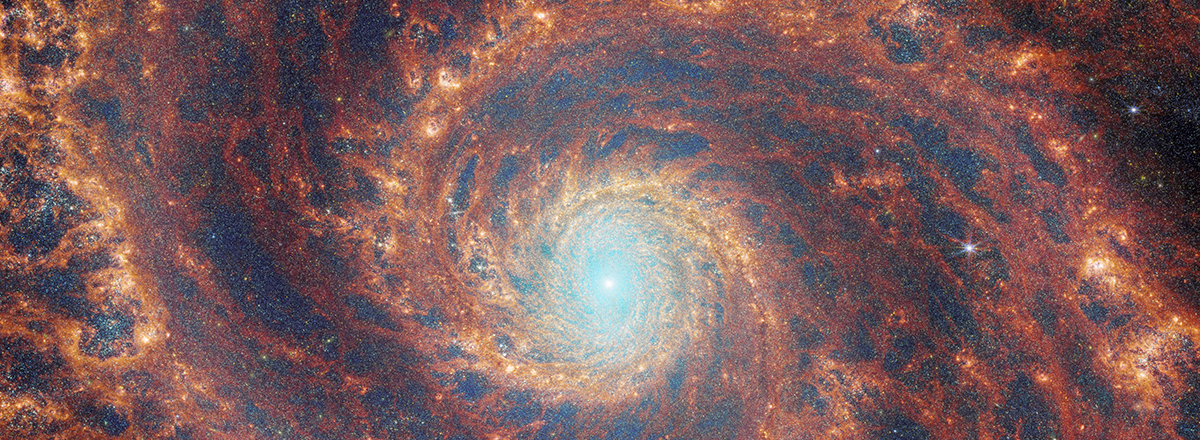James Webb Space Telescope Captures New Images of the Whirlpool Galaxy
Combining both the MIRI and NIRCam images into a composite photo reveals a rich tapestry of details, providing valuable insights into the interplay between stellar feedback and star formation in extragalactic environments.

The James Webb Space Telescope (JWST) has unveiled a mesmerizing image of the Whirlpool galaxy, also known as M51 or NGC 5194, located a staggering 27 million light-years away from Earth. This breathtaking image offers a vivid glimpse into the intricate relationship between M51 and its celestial neighbor, the dwarf galaxy NGC 5195.
One of the standout features of this galactic spectacle is the elaborate pattern of M51's spiral arms, which owes its existence in part to the gravitational influence of its smaller companion. This interaction between the two galaxies has contributed to the formation of M51's distinct and prominent spiral arms.
What sets M51 apart is its classification as a "grand-design" galaxy, a relatively rare category among spiral galaxies. Grand-design spirals like M51 boast exceptionally well-defined and striking arms that emanate from a clearly discernible core.
To capture this cosmic masterpiece, the JWST used its powerful infrared instruments, the Mid-InfraRed Instrument and the Near-InfraRed Camera. These instruments decode infrared light signals emitted by distant celestial objects, enabling the telescope to reveal hidden details that are invisible to the human eye.
Combining both the MIRI and NIRCam images into a composite photo reveals a rich tapestry of details, providing valuable insights into the interplay between stellar feedback and star formation in extragalactic environments.

